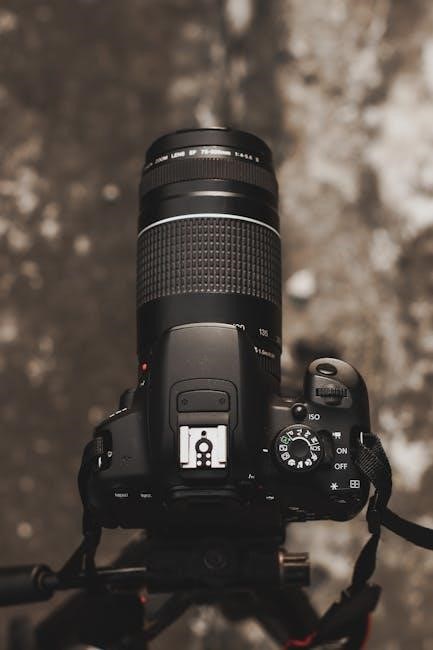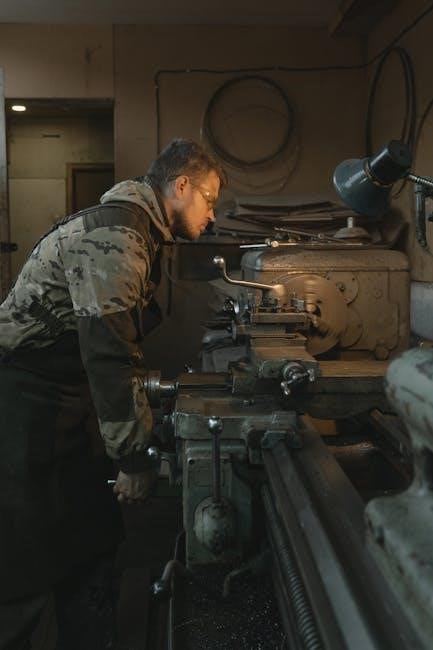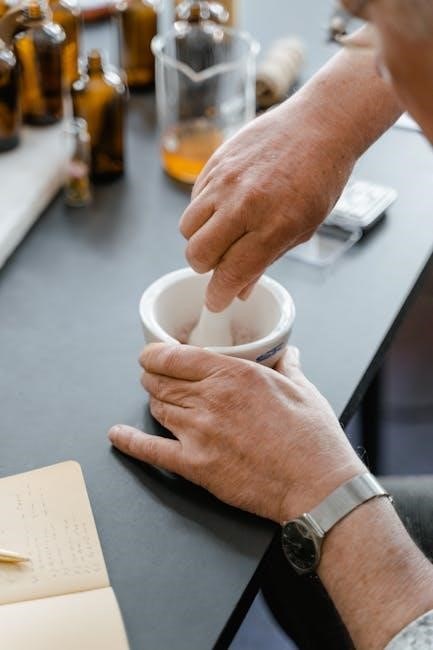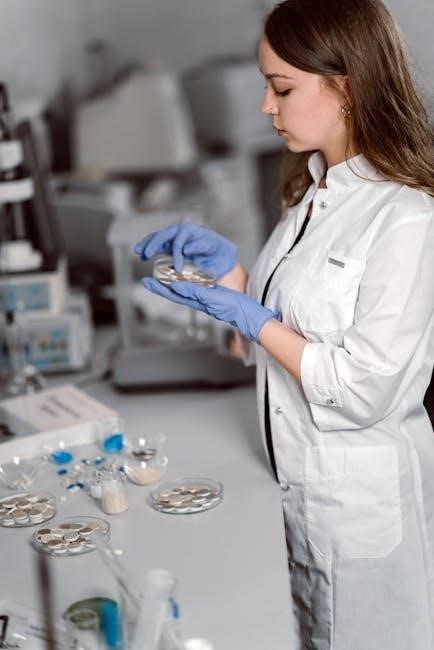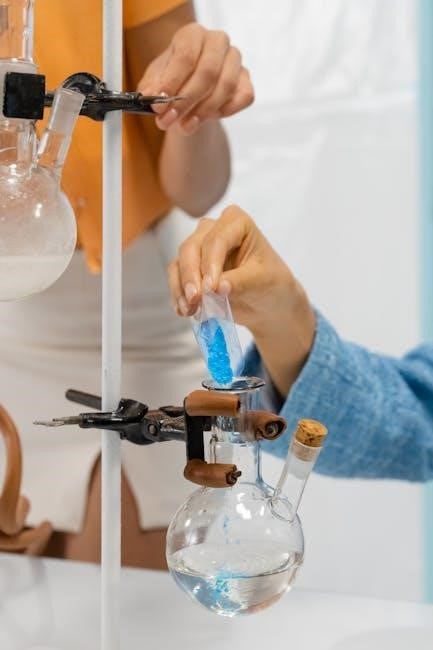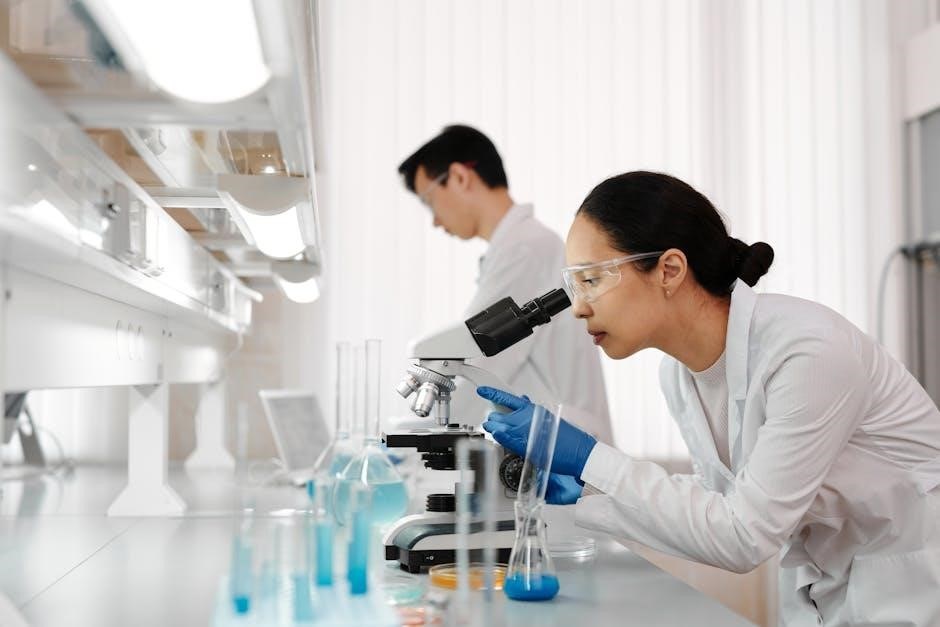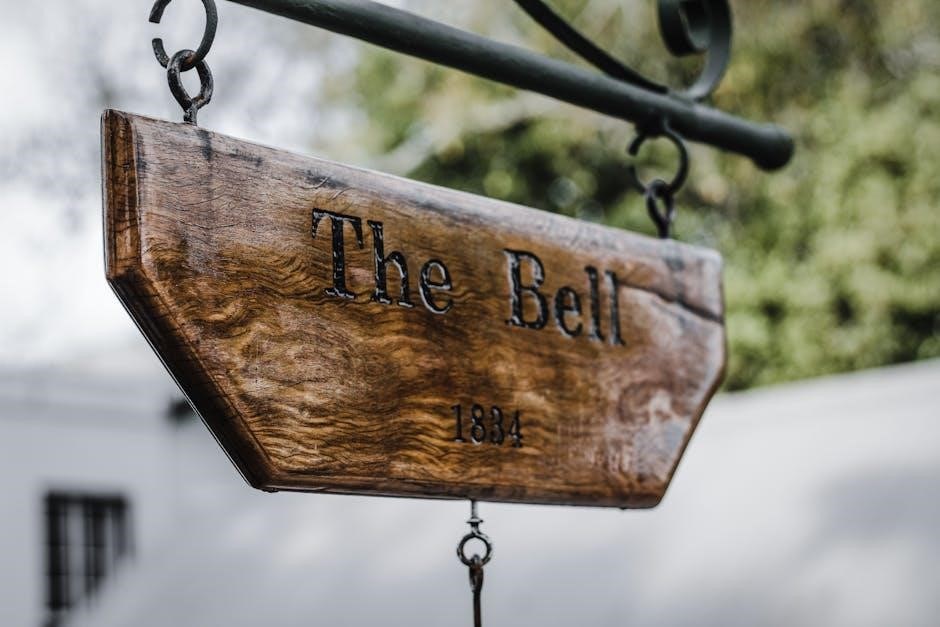Welcome to the Virginia Beach TV Guide, your ultimate resource for local programming, sports, and entertainment․ Discover the best shows, live events, and cultural highlights in the area․
1․1 Overview of Virginia Beach TV Guide
The Virginia Beach TV Guide offers a comprehensive listing of local channels, networks, and programming․ It features live sports, news, and entertainment, catering to diverse interests․ From music festivals like Beach It! to A&E’s new series filmed at the Virginia Beach Correctional Center, the guide highlights the city’s vibrant cultural scene․ It also includes election coverage, seasonal events, and family-friendly content, making it a go-to resource for residents and visitors alike․
1․2 Importance of Local TV Programming
Local TV programming in Virginia Beach plays a crucial role in connecting residents with their community․ It provides exclusive coverage of regional events, such as the Beach It! music festival and political updates like the 2023 general election․ These programs highlight local culture, sports, and news, fostering a sense of identity and engagement․ They also offer platforms for local businesses and artists to thrive, making them indispensable for staying informed and entertained․

Local Channels and Networks
Virginia Beach offers a variety of local channels, including major networks like ABC and CBS, providing diverse programming․ These channels cover local events, news, and sports, ensuring residents stay informed and entertained․ Cable and satellite providers also offer access to these networks, making it easy to enjoy your favorite shows and live coverage․
2․1 Major TV Networks in Virginia Beach
Virginia Beach is served by major TV networks like ABC, CBS, NBC, and FOX, offering a wide range of programming․ These networks provide national news, sports, and entertainment, while also showcasing local content tailored to the community․ With both over-the-air and cable options available, residents can enjoy high-quality programming that suits their diverse interests and preferences․ This ensures comprehensive coverage of events, shows, and news relevant to Virginia Beach viewers․
2․2 Local Stations and Their Programming
Local stations in Virginia Beach, such as WAVY-TV and WTKR-TV, offer a mix of news, sports, and community-focused programming․ They cover regional events like the Beach It! Music Festival and provide updates on local elections․ Additionally, stations air shows like Beach Events and Oceanfront Concert Series, showcasing the area’s vibrant culture․ These stations are essential for staying informed and entertained with content tailored to Virginia Beach residents․
2․3 Cable and Satellite TV Providers
Virginia Beach residents can access a variety of cable and satellite TV providers, including Cox Communications, DirecTV, and Dish Network․ These providers offer diverse channel packages, HD options, and exclusive sports networks․ Many include DVR capabilities and streaming options for on-the-go viewing․ Subscribers can enjoy local stations, premium channels, and international programming tailored to their preferences․ These services ensure comprehensive entertainment and news coverage for the community․

Popular TV Shows and Series
Virginia Beach TV Guide features a blend of popular and upcoming series, including dramas, comedies, and reality TV․ Stay tuned for diverse entertainment catering to all audiences․
3․1 Current Popular TV Shows in Virginia Beach
Virginia Beach viewers enjoy a diverse range of popular TV shows, including dramas like The Walking Dead and Yellowstone, as well as reality TV favorites like Survivor and The Voice․ Local networks also feature family-friendly content, such as Bluey and Sesame Street, catering to younger audiences․ With a mix of national hits and regional programming, there’s something for everyone to watch in Virginia Beach․
3․2 Local TV Series and Productions
Virginia Beach is home to a thriving local TV scene, featuring original series that highlight the region’s culture and stories․ For instance, the A&E series filmed at the Virginia Beach Correctional Center offers a unique glimpse into local justice systems․ Other productions include documentaries on coastal life and community-driven narratives, showcasing the area’s rich heritage․ These series often blend drama, reality, and educational content, appealing to a wide audience while preserving local identity․
3․3 Upcoming TV Series and Premieres
Virginia Beach TV is set to premiere exciting new series, including coverage of the Oceanfront Concert Series․ Major music festivals like Beach It! and Something in the Water will feature top artists like Luke Bryan and Miranda Lambert․ These events will bring live performances, exclusive interviews, and behind-the-scenes content to viewers․ Stay tuned for announcements on premiere dates and special broadcasts showcasing the region’s vibrant culture and entertainment scene․
3․4 Where to Watch Popular TV Shows
Popular TV shows in Virginia Beach can be accessed through various platforms․ Local cable providers like Cox Communications and Verizon Fios offer extensive channel lineups․ Streaming services such as Hulu, Netflix, and Amazon Prime Video also feature a wide range of shows․ Additionally, free streaming apps like Pluto TV and Tubi provide on-demand content․ Check your provider’s guide or app for schedules and availability of your favorite series․

Sports Coverage on Virginia Beach TV
Sports Coverage on Virginia Beach TV offers live events, sports networks, and local programming․ Viewers can enjoy games and analysis through cable or streaming services easily․
4․1 Live Sports Events on Local TV
Virginia Beach TV broadcasts various live sports events, captivating local audiences․ From regional football games to national basketball matches, viewers can enjoy real-time action and exclusive commentary․ Additionally, coverage of local sports festivals and marathons is featured, ensuring diverse entertainment for all sports enthusiasts in the area;
4․2 Sports Networks Available in Virginia Beach
Virginia Beach offers a variety of sports networks, ensuring comprehensive coverage for fans․ Major networks like ESPN, Fox Sports, and NBC Sports provide national and international sports events․ Locally, Cox Communications and regional networks deliver live games and updates․ Baseball enthusiasts can catch Orioles and Nationals games on MASN, while basketball fans enjoy Wizards matchups․ These networks cater to diverse sports interests, keeping viewers entertained year-round․
4․3 How to Watch Sports Online
Virginia Beach residents can stream sports online through various platforms․ ESPN+, Peacock, and Paramount+ offer live events, while Hulu and YouTube TV provide access to local sports channels․ Fans can also watch games through official league apps like NFL Sunday Ticket or NBA League Pass․ Additionally, many local stations stream sports live on their websites, making it easy to catch your favorite teams in action from home or on the go․

Movies and Entertainment
Explore the latest movies, classic films, and entertainment options available in Virginia Beach․ Discover new releases, streaming platforms, and family-friendly content tailored for all audiences․
5․1 New Movie Releases on TV
Stay updated with the latest movie releases airing on Virginia Beach TV channels․ From blockbuster hits to indie films, viewers can enjoy a diverse range of cinematic experiences․ Many networks feature newly released movies, often paired with behind-the-scenes insights or exclusive interviews․ Additionally, streaming platforms accessible in Virginia Beach offer on-demand access to the newest films, catering to all tastes and preferences․
5․2 Classic Movies and Retro Programming
Virginia Beach TV Guide showcases a variety of classic movies and retro programming, offering viewers a trip down memory lane․ From timeless Hollywood films to beloved TV series, these programs cater to audiences seeking nostalgia․ Many networks feature themed nights, highlighting iconic genres like comedy, drama, or action․ Retro enthusiasts can enjoy vintage cinema while discovering hidden gems or revisiting childhood favorites, all from the comfort of home․
5․3 Movie Channels and Streaming Options
Virginia Beach TV Guide offers a diverse range of movie channels and streaming options for film enthusiasts․ Popular platforms like Netflix, Hulu, and Amazon Prime provide access to a vast library of movies․ Additionally, niche streaming services cater to specific genres, such as horror or classic films․ Viewers can also enjoy on-demand movies through cable providers or apps, ensuring endless entertainment choices tailored to every taste and preference․

Local News and Events
Virginia Beach TV Guide offers live coverage of local news, events, and cultural activities, ensuring residents stay informed and connected to their vibrant community․

6․1 Local News Programs and Schedules
Virginia Beach TV Guide features extensive local news coverage, including daily updates on weather, traffic, and community events․ Popular programs like 13News Now provide breaking news and in-depth stories․ Schedules are available online, ensuring viewers never miss important broadcasts․ From morning shows to evening reports, residents can stay informed about local issues and events shaping the area․
6․2 Coverage of Virginia Beach Events
Virginia Beach TV Guide offers comprehensive coverage of local events, from the Something in the Water festival to the Oceanfront Concert Series․ Viewers can enjoy live broadcasts of music festivals, cultural celebrations, and community gatherings․ The guide highlights event schedules, performer lineups, and exclusive behind-the-scenes content, ensuring residents and visitors stay connected to the city’s vibrant cultural scene․
6․3 Election Coverage and Political Updates
Stay informed with Virginia Beach TV Guide’s election coverage and political updates․ The guide provides live broadcasts of debates, candidate interviews, and election results․ It also features analysis of local races, such as the pivotal 2023 Virginia Beach elections, ensuring viewers are up-to-date on the latest political developments and their impact on the community․

Family-Friendly Programming
Explore a variety of family-friendly shows, educational content, and movies suitable for all ages in Virginia Beach․ The TV guide highlights kid-friendly channels and series․
7․1 Kids’ TV Shows and Educational Content
Virginia Beach TV offers a wide range of children’s programming, including educational shows that promote learning and creativity․ From animated series to science-based content, local stations provide engaging and developmental entertainment for kids, ensuring both fun and education․ Parents can find these programs on popular family-friendly channels, making it easy to choose suitable content for their little ones․ Additionally, many shows are designed to align with school curricula, reinforcing learning goals and fostering intellectual growth․ With a focus on positive role models and diverse storylines, these programs cater to children of all ages and interests, making screen time both enjoyable and enriching․ The TV guide also highlights kid-friendly channels and series, ensuring parents can easily navigate and select appropriate content․ By prioritizing educational and entertaining content, Virginia Beach TV supports the cognitive and emotional development of children in the community․ Furthermore, live events and special broadcasts often include family-friendly options, encouraging shared viewing experiences․ Overall, the selection of kids’ TV shows and educational content in Virginia Beach is both comprehensive and thoughtful, meeting the needs of modern families․ The availability of streaming options and on-demand services further enhances accessibility, allowing parents to choose when and how their children watch their favorite shows․ This approach ensures that children in Virginia Beach have access to a variety of engaging, educational, and entertaining content, helping them grow into well-rounded individuals․ Moreover, the inclusion of local productions and community-focused content provides children with a sense of place and connection to their surroundings․ The TV guide’s emphasis on family-friendly programming reflects the community’s commitment to supporting children’s development through media․ As a result, families in Virginia Beach can rely on a robust selection of kids’ TV shows and educational content that cater to their needs and preferences․ This not only enriches their daily routines but also contributes to their overall well-being and education․ The diversity of available content ensures that there is something for every child, regardless of their interests or learning style․ By leveraging both traditional and modern platforms, Virginia Beach TV continues to be a trusted source for high-quality, family-friendly entertainment and education․ This dedication to providing valuable content for children underscores the importance of television as a tool for learning and growth in the digital age․ Through its extensive range of kids’ programming, Virginia Beach TV plays a vital role in shaping young minds and fostering a love for learning that extends beyond the screen․ The combination of educational and entertaining content creates a balanced viewing experience, helping children to thrive in both academic and personal settings․ With such a strong focus on family-friendly programming, Virginia Beach TV remains a cornerstone of community support for raising informed and imaginative children․ The continuous updates and additions to the TV guide ensure that parents always have access to the latest and most relevant content for their kids․ This proactive approach to children’s programming highlights the community’s dedication to providing resources that benefit the entire family․ In conclusion, the selection of kids’ TV shows and educational content available through Virginia Beach TV is a testament to the region’s commitment to nurturing young minds and supporting families through quality entertainment and education․ By offering a diverse array of programs tailored to children’s needs, the TV guide becomes an essential tool for parents seeking to enrich their children’s lives․ The emphasis on both fun and learning ensures that screen time is not only enjoyable but also meaningful, contributing to the holistic development of children in Virginia Beach; As the media landscape evolves, Virginia Beach TV remains at the forefront of providing innovative and engaging content for kids, solidifying its role as a trusted partner in family entertainment and education․ The integration of local and national programming further enhances the viewing experience, offering children a broad perspective on the world while maintaining a strong connection to their community․ This blend of global and local content helps children develop a well-rounded understanding of diverse cultures and ideas, preparing them to navigate an increasingly interconnected world․ Through its commitment to excellence in family-friendly programming, Virginia Beach TV continues to set a high standard for children’s entertainment and education, making it a valued resource for families in the region․ The availability of educational content in multiple formats ensures that children can learn and grow at their own pace, whether through live broadcasts, on-demand streaming, or interactive online resources․ This flexibility allows parents to customize their children’s viewing experiences, ensuring that each child’s unique needs and interests are met․ The inclusion of educational series that align with school curricula also supports teachers and homeschooling parents, providing additional resources to reinforce classroom lessons․ By fostering partnerships between local educators and broadcasters, Virginia Beach TV helps create a cohesive learning environment that extends beyond traditional classroom settings․ This collaborative approach underscores the community’s commitment to education and highlights the important role of television in supporting academic goals․ As a result, children in Virginia Beach benefit from a comprehensive and integrated learning experience that combines the best of both worlds: engaging entertainment and rigorous education․ The TV guide’s user-friendly format makes it easy for families to navigate and find the perfect shows for their children, ensuring that every viewing experience is both enjoyable and enriching․ With a strong emphasis on quality and accessibility, Virginia Beach TV continues to be a leader in family-friendly programming, offering something for every child and every family․ The ongoing dedication to improving and expanding children’s content ensures that the TV guide remains a trusted and indispensable resource for years to come․ By prioritizing the needs of families and children, Virginia Beach TV not only entertains but also empowers the next generation to succeed in all areas of life․ The impact of this programming extends far beyond the screen, shaping the minds and characters of young people in lasting and meaningful ways․ As the community grows and evolves, so too does the selection of kids’ TV shows and educational content, ensuring that Virginia Beach TV remains a vital part of family life and learning․ Through its unwavering commitment to quality and innovation, the TV guide continues to set new standards for children’s entertainment and education, inspiring young viewers to explore, learn, and thrive․ The future of family-friendly programming in Virginia Beach looks bright, with a continued focus on providing engaging, educational, and culturally enriching content for children of all ages․ By staying at the forefront of media trends and educational advancements, Virginia Beach TV ensures that its young audience remains informed, entertained, and prepared for the challenges of the future․ The combination of traditional television and modern streaming options allows families to access content whenever and wherever they choose, making learning and entertainment more accessible than ever before․ This adaptability ensures that Virginia Beach TV remains a relevant and indispensable part of family life, even as technology and viewing habits continue to evolve․ The dedication to providing high-quality, family-friendly programming is evident in every aspect of the TV guide, from the careful selection of shows to the user-friendly interface designed with families in mind․ By understanding the unique needs of its audience, Virginia Beach TV delivers a viewing experience that is both enjoyable and beneficial for children and parents alike․ The inclusion of diverse perspectives and inclusive storytelling further enriches the programming, fostering empathy and understanding in young viewers․ This approach not only reflects the values of the community but also helps to create a more compassionate and open-minded generation․ As Virginia Beach TV continues to innovate and expand its offerings, it remains a trusted and beloved resource for families seeking meaningful and engaging content for their children․ The enduring popularity of its family-friendly programming is a testament to the community’s commitment to the well-being and development of its youngest members․ By providing a platform for educational and entertaining content, Virginia Beach TV plays a vital role in shaping the future of its children and contributing to the vibrant cultural landscape of the region․ In every way, the selection of kids’ TV shows and educational content on Virginia Beach TV exemplifies the perfect blend of fun and learning, offering families a reliable source of high-quality entertainment that supports the growth and development of their children․ As the community looks to the future, Virginia Beach TV stands poised to continue its tradition of excellence in family-friendly programming, ensuring that every child has access to the resources they need to succeed and thrive in an ever-changing world․
7․2 Family-Friendly Movies and Series
Virginia Beach TV offers a variety of family-friendly movies and series, perfect for shared viewing experiences․ From animated classics to heartwarming dramas, these films and shows cater to all ages․ Many local stations feature uplifting stories, adventures, and comedies that promote positive values․ Additionally, streaming options and on-demand services provide easy access to these films․ Parents can enjoy quality time with their kids, knowing the content is suitable for the whole family․ The diverse selection ensures there’s something for everyone, fostering a sense of togetherness and entertainment․ With a focus on wholesome programming, Virginia Beach TV makes family movie nights a breeze․ The availability of both modern and timeless classics appeals to a wide range of audiences, making it easy to find films that resonate with all family members․ This emphasis on family-friendly content highlights the community’s commitment to providing enjoyable and appropriate entertainment for households of all sizes․ By offering a mix of genres and eras, Virginia Beach TV ensures that families can always find something new and exciting to watch together․ The inclusion of educational and inspirational films further enhances the viewing experience, offering both entertainment and enrichment․ With such a robust selection of family-friendly movies and series, Virginia Beach TV remains a trusted source for quality entertainment that brings families closer together․ The convenience of streaming and on-demand options allows families to enjoy their favorite films and shows at their own pace, making it easier than ever to prioritize family time․ This dedication to family-friendly programming underscores the importance of shared experiences and the role of television in fostering meaningful connections within households․ By providing a diverse and engaging lineup of movies and series, Virginia Beach TV continues to be a vital part of family life in the community․ The combination of timeless classics and modern favorites ensures that there’s always something new to discover, keeping family movie nights fresh and exciting․ With a focus on content that aligns with family values, Virginia Beach TV helps create lasting memories and strengthens family bonds through shared entertainment experiences․ The availability of these films and series across various platforms further enhances accessibility, allowing families to enjoy their favorite content whenever and wherever they choose․ This adaptability ensures that family-friendly programming remains a cornerstone of Virginia Beach TV, catering to the diverse needs and preferences of local families․ By prioritizing wholesome and engaging content, the TV guide supports the well-being and enjoyment of families, making it an indispensable resource for household entertainment․ The inclusion of both local and national productions adds a unique touch, offering families a glimpse into their own community while also exploring broader cultural narratives․ This blend of local flavor and universal appeal makes Virginia Beach TV a standout provider of family-friendly movies and series․ With a constant update of new releases and timeless favorites, the selection stays fresh and relevant, ensuring that families always have something exciting to look forward to․ The emphasis on quality and appropriateness guarantees that parents can trust the content available on Virginia Beach TV, allowing them to focus on enjoying these moments with their loved ones․ In every way, the family-friendly movies and series offered through Virginia Beach TV exemplify the perfect balance of entertainment and values, making them a cherished part of family life in the region․ The enduring popularity of these films and shows is a testament to the community’s appreciation for content that brings people together and fosters a sense of connection․ As Virginia Beach TV continues to evolve, its commitment to family-friendly programming remains unwavering, ensuring that future generations can also enjoy the magic of shared viewing experiences․ The combination of tradition and innovation in its lineup of movies and series ensures that Virginia Beach TV stays at the forefront of family entertainment, providing timeless enjoyment for households of all ages․ By consistently delivering high-quality, family-friendly content, Virginia Beach TV reinforces its role as a trusted partner in creating lasting memories and strengthening family bonds through the power of shared entertainment․
7․3 Parental Guidance and TV Ratings
Virginia Beach TV Guide emphasizes parental guidance with clear TV ratings like TV-Y, TV-G, and TV-PG․ These ratings help families choose suitable content for children․ Parents can use DVR settings and content filters to restrict access to mature programming․ This ensures a safe viewing experience, aligning with family values and promoting responsible media consumption․ The guide also highlights shows with educational value, making it easier for parents to select enriching content for their kids․ By providing these tools, Virginia Beach TV supports parents in managing their children’s screen time effectively, fostering a positive entertainment environment for all ages․ This approach not only protects young viewers but also empowers parents to make informed decisions about the media their children consume․ The combination of clear ratings and advanced parental controls ensures that families can enjoy television responsibly and confidently․ With these features, Virginia Beach TV Guide stands as a reliable resource for family-friendly entertainment tailored to diverse household needs․ The emphasis on parental guidance underscores the community’s commitment to providing a safe and enriching media experience for children․ By integrating these tools seamlessly, the guide helps parents navigate the vast array of programming available, ensuring that their children are exposed to appropriate and beneficial content․ This focus on responsible viewing habits reflects the broader values of the Virginia Beach community, prioritizing the well-being and development of its youngest members․ The availability of such features makes Virginia Beach TV Guide an indispensable tool for modern families seeking to balance entertainment with education and safety․ With ongoing updates and improvements, the guide continues to adapt to the evolving needs of parents, ensuring that it remains a trusted ally in managing children’s media consumption․ By fostering a culture of informed viewing, Virginia Beach TV Guide plays a pivotal role in shaping the media literacy and critical thinking skills of the next generation․ This proactive approach to parental guidance not only enhances the viewing experience but also contributes to the overall quality of family life in Virginia Beach․ The integration of advanced parental controls and clear content ratings exemplifies the guide’s dedication to supporting families in their efforts to raise mindful and discerning viewers․ As a result, Virginia Beach TV Guide remains a cornerstone of responsible entertainment in the community, empowering parents to make the best choices for their children․ The guide’s commitment to excellence in this area ensures that families can continue to enjoy the benefits of television while maintaining a safe and nurturing environment for all members․ With each update, Virginia Beach TV Guide reaffirms its role as a leader in family-focused media solutions, setting a high standard for parental guidance and content accessibility․ By prioritizing these features, the guide not only meets the current needs of its audience but also anticipates future challenges, ensuring long-term relevance and effectiveness․ This forward-thinking approach guarantees that Virginia Beach TV Guide will remain a vital resource for families navigating the ever-changing landscape of modern media․ The guide’s emphasis on parental guidance and TV ratings serves as a testament to its enduring commitment to the values of the Virginia Beach community, where family and education are paramount․ By consistently delivering on these promises, the guide strengthens its position as a trusted partner in fostering a positive and enriching media environment for children․ The combination of user-friendly tools and comprehensive content ratings makes Virginia Beach TV Guide an essential asset for any family seeking to make the most of their television experience․ With its unwavering focus on parental guidance, the guide continues to empower families to thrive in an increasingly complex media world․ The guide’s dedication to this cause ensures that it will remain a cornerstone of family entertainment in Virginia Beach for years to come, adapting and evolving to meet the ever-changing needs of its audience․ By upholding the highest standards of parental guidance and content accessibility, Virginia Beach TV Guide sets an example for other media resources to follow, solidifying its reputation as a leader in the field․ This commitment to excellence not only benefits families today but also invests in the future of media literacy and responsible viewing practices for generations to come․ As Virginia Beach TV Guide continues to innovate and improve, it reaffirms its role as a trusted ally for families seeking to navigate the complexities of modern television․ The guide’s focus on parental guidance and TV ratings is just one aspect of its broader mission to enhance the overall viewing experience, ensuring that it remains a vital and indispensable resource for the community․ By addressing the unique challenges of contemporary media, Virginia Beach TV Guide demonstrates its adaptability and responsiveness to the needs of its audience․ This dynamic approach ensures that the guide stays relevant and effective, providing ongoing value to families as they navigate the ever-evolving media landscape․ The integration of advanced tools and clear content ratings underscores the guide’s proactive stance on parental guidance, making it a beacon of excellence in family entertainment․ As a result, Virginia Beach TV Guide continues to be a source of inspiration and support for families committed to fostering a positive and enriching media environment for their children․ The guide’s enduring success is a testament to its unwavering dedication to the principles of responsible viewing and informed decision-making․ By consistently delivering on its promises, Virginia Beach TV Guide cements its place as a trusted and indispensable resource for families in the Virginia Beach community․ The guide’s emphasis on parental guidance and TV ratings serves as a foundation upon which families can build a healthy and balanced approach to media consumption․ This focus not only enhances the viewing experience but also contributes to the overall well-being of children, equipping them with the skills to navigate the complexities of modern media confidently․ As Virginia Beach TV Guide looks to the future, it remains committed to upholding these values, ensuring that it continues to meet the needs of families in an ever-changing world․ By doing so, the guide solidifies its position as a leader in the field of family entertainment, providing a reliable and trustworthy resource for parents seeking to create a nurturing and enriching environment for their children․ The guide’s dedication to parental guidance and TV ratings is just one example of its broader commitment to excellence and community support, making it an indispensable asset for families in Virginia Beach and beyond․ With each new update and feature, Virginia Beach TV Guide reaffirms its role as a champion of responsible media consumption, empowering families to make informed decisions and enjoy the benefits of television together․ The guide’s focus on these critical areas ensures that it remains a vital and relevant resource, adapting to the needs of its audience while staying true to its core values․ As a result, Virginia Beach TV Guide continues to be a source of inspiration and guidance for families navigating the complexities of modern media, setting a high standard for others to follow․ The guide’s success is a testament to the power of community-focused media solutions and the enduring importance of parental guidance in shaping the viewing habits of future generations․ By staying at the forefront of this evolving landscape, Virginia Beach TV Guide ensures that it will remain a trusted and valued resource for years to come, providing families with the tools and information they need to thrive in an increasingly media-driven world․ The guide’s commitment to excellence in parental guidance and TV ratings is just one aspect of its comprehensive approach to family entertainment, making it a cornerstone of responsible media consumption in the Virginia Beach community․ As the media landscape continues to evolve, Virginia Beach TV Guide stands ready to adapt and innovate, ensuring that it remains a trusted ally for families seeking to navigate the challenges and opportunities of modern television․ The guide’s unwavering dedication to these values ensures that it will continue to play a vital role in shaping the media literacy and critical thinking skills of the next generation, empowering them to engage with media in a positive and constructive manner․ By upholding the highest standards of parental guidance and content accessibility, Virginia Beach TV Guide sets an example for other media resources to emulate, further solidifying its reputation as a leader in the field of family entertainment․ The guide’s focus on these key areas not only addresses the immediate needs of its audience but also invests in the future of media literacy and responsible viewing practices, creating

Upcoming Events and Updates

Virginia Beach Music and Arts
Virginia Beach TV Guide features live coverage of music festivals like Beach It! and the Oceanfront Concert Series, showcasing top artists and local performances, enriching the cultural scene․















